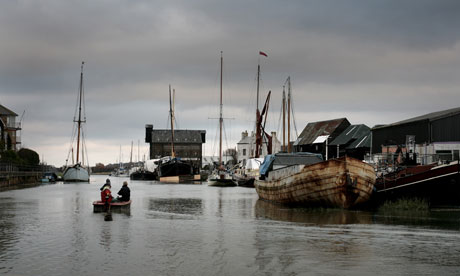Sloyd or slöjd in the 19th century could perhaps have been translated as handcraft though it seems most commonly applied to the woodwork and the wider range of home crafts including textiles etc tend to be called hemslöjd. Sloyd like craft had dual meanings of sleight of hand or crafty but the real change came in the late 19th century. Uno Cygnaeus introduced crafts or sloyd as a mandatory subject in the Finish school system. Later Otto Salomon developed the ideas further in Sweden and popularised them through his teachings at the international craft teachers school at Naas.
The idea of "educational sloyd" was that it was not vocational, it was taught as part of a holistic education in the same way that we teach physical education today to all students not as if they are going to be great athletes but because it benefits the whole person to take some exercise. So educational sloyd helped students develop in many ways. The learnt hand eye coordination obviously but also accuracy, learning the importance of quality in workmanship and learning to understand and honour handwork and physical labour even if they were bound for desk jobs themselves. There are many parts of Salomon's teachings which I used when developing my own teaching methods for my spoon carving courses. He broke down woodworking into a series of very simple steps that could be mastered in turn. First using a tool in a particular way, then doing a simple project, then progressing to slightly more complex methods and projects.
Today sloyd is most commonly associated with free carving with axe and knife but most of Salomon's teaching was what we would call bench joinery. He was I believe the first to start by teaching the making of joints on practice pieces, progressing from simple to complex joints. This was still being taught in woodwork classes in UK schools in the 1980's and still survives in city and guilds woodwork teaching. Not many folk know that those techniques of teaching came originally from Naas. A great many UK teachers went to Naas in the late 19th and early 20th century so much so that the word sloyd is used commonly in educational writing in English at the time and there is never need to explain it, people knew what it meant. In 1892 S Barter published "Woodwork, the English Sloyd" free download here which was an adaptation of the Naas system created in association with the City and Guilds. Salomon's "teachers handbook of Sloyd" used to sell for silly money but was reprinted a few years ago so I finally got a copy and it is now available free online here.
Sadly over the years the original concept of sloyd teaching as good wholesome practice that benefited the whole person was eroded. By the time I was at school woodwork classes whilst still following much of the basics of Salomon's methods had become primarily vocational. If you were academically intelligent you did academic subjects and if you weren't well then you chose between woodwork and metalwork. Once it was established that this was vocational rather than holistic education it took a short time to look what people were doing in industry and out went dovetails and timber to be replaced by biscuit joints then MDF. Very soon "craft design and technology" became "design and technology" did anyone notice that happen? when was it? it was certainly within the last 10 years and now DT is about designing stuff to be cut out by laser cutters and made by injection moulders. It has become one more subject where kids sit down at computers instead of using their hands on real raw materials to make something.
The only place I have seen making a real difference is Ruskin Mill Educational Trust. They do wonderful things with their students but it is sad it is not mainstream education. So educational sloyd was not about handcraft or making stuff. It was a pedagogical theory (pedagog is a wonderful word which is used a lot by Swedes) it was about going through a process of teaching which had a profound effect on the student. I think many of us who teach craft skills well see regularly what a profound effect it can have when people discover they can use a tool well, and having perhaps struggled and persevered they master some difficult technique. I love sharing in that experience, it only comes when you allow the student to work on their own, don't do it for them, do all you can to make the process smooth, good sharp tools, good raw material, a little gentle advice here and there, check they are safe and making progress, encourage when the going is tough and finally share in the joy and sense of achievement. I do love my job.
I see all this as being parallel to cookery teaching in schools. There was a stage when kids were designing ready meals and deciding what made a healthy pizza without somehow ever making the pizza. Jamie Oliver made a huge difference there and we need to do the same with craft teaching. Get back to simple tools and real raw materials because that is where children learn most and are empowered. There is nothing empowering about using a laser cutter however perfect the result. I suspect the flush of "sloyd" on the web is due to Roy Underhill my friend Sean Hellman just posted a link to this episode of his woodwrights shop program. There can be little doubt the source of the material for the episode was another friend Doug Stowe who has a nice blog called "the wisdom of hands" we correspond on the subject of sloyd and he wrote a few good articles 5 years ago in the US woodwork press. Roy puts it across well though and great to get it out to a wide audience.
Watch the full episode. See more The Woodwrights Shop.





